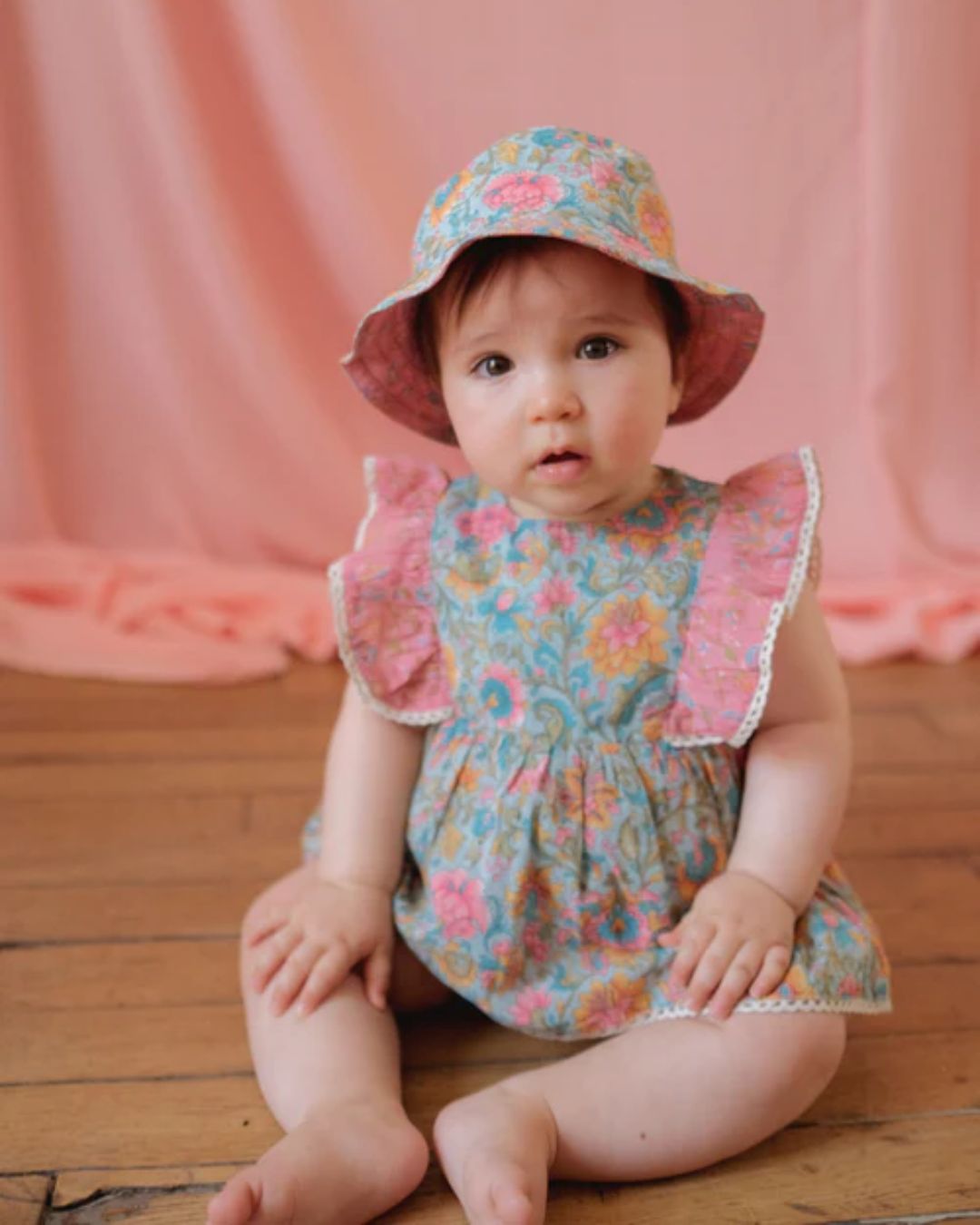The Surprising Impact of Fabric Frequency

on Your Daily Energy Levels
What is fabric frequency and why it matters
You know that feeling when you put on certain clothes and somehow feel more... alive? And then there are those outfits that just seem to drain you, even though you can't quite put your finger on why? I've been thinking about this a lot lately, and it turns out there might be something really fascinating behind these experiences. It's all part of a holistic approach to understanding how our clothing choices affect our overall well-being and energy levels.
It's called fabric frequency, and honestly, when I first heard about it, I wasn't sure what to think. The idea is that fabrics might have their own vibrational energy - not just the obvious stuff like how soft or breathable they are, but actual frequencies that could affect how we feel when we wear them. This concept goes beyond simple comfort; it suggests that our clothing choices could be an important aspect of self-care, potentially influencing our nervous system and overall energy throughout the day.
Understanding the frequencies of fabric could be a game-changer for our daily energy levels and overall holistic wellness. It's an intriguing intersection of ancient wisdom and modern science that might just revolutionise how we think about our wardrobe choices.

The science behind fabric vibration frequency
Here's where it gets interesting. Everything around us - including the fabrics we wear vibrates at specific frequencies. These vibrations happen at the molecular level and are measured in something called Hertz (Hz), which basically counts how many times something oscillates per second. The molecular structure of different fabrics can influence their vibrational state, potentially affecting how they interact with our body's energy field.
The science of bioenergetics suggests these vibrations can actually be measured and compared. During fabric frequency testing, researchers use specialised equipment to detect the subtle energy signatures that different textiles give off. There's this machine called the Ag-Environ machine, developed by retired Texas A&M professor Bob Graham, that was originally designed to help farmers figure out the best times to harvest their agricultural commodities by analysing frequency signatures.
Pretty wild, right? This technology, originally developed for the agricultural sector, is now finding applications in the medical field and textile industry, opening up new avenues for understanding how our clothing choices might impact affect our health and energy levels.

How fabric energy frequency interacts with the human body
According to research in this field, our bodies have their own signature frequency, around 100 Hz when we're healthy. This forms part of our body energy system and bioenergetic field. When we wear clothes, these fabrics are right there against our skin, which is our largest organ. So there's this potential interaction happening between the fabric's energy and our body's electromagnetic field.
The thinking is that fabrics with frequencies higher than our body's natural frequency might actually give us energy, while those with lower frequencies could drain it. This could explain why some clothes just feel "right" and others don't, even when they fit perfectly. It's as if certain fabrics can enhance our energetic balance, potentially influencing everything from our body temperature to our anxiety levels.
Here's something that really caught my attention. When the body's energy drops below normal levels, it may indicate compromised health. And get this - a diseased, nearly dead person has a frequency of about 15 Hz, which is exactly the same frequency that synthetic fabrics like polyester and rayon register. Now, I'm not saying this proves anything, but it definitely makes you wonder about our clothing choices, doesn't it? Could the choices be playing a role in our overall health and well-being?
Overview of Dr. Heidi Yellen's fabric frequency study
Back in 2003, Dr. Heidi Yellen conducted a groundbreaking bioenergetics study that measured the frequencies of various fabrics. Her findings were pretty eye-opening:
- Linen and wool both hit an impressive 5,000 Hz
- Organic cotton measured 100 Hz - perfectly matching our human body frequency
- Non-organic cotton came in around 70 Hz
- Silk, polyester, and rayon all measured much lower at about 15 Hz
But here's the part that really blew my mind. Dr. Heidi Yellen discovered that when you wear linen and wool together, their frequencies actually cancel each other out completely, dropping to zero. This phenomenon of opposing energy flows made me think of that ancient instruction in Deuteronomy 22:11 that warns: "Do not wear clothes of wool and linen woven together". Maybe there was more wisdom in that than we realised? It's fascinating how these sacred texts might contain insights into energy flow and fabric choices that we're only now beginning to understand scientifically.
Now, I think it’s important to acknowledge that some critics question the scientific validity of Dr. Yellen’s methodology and findings. The research hasn’t been universally accepted, and discussions around how this all works are still evolving. Still, her work has opened up fascinating conversations about the potential connection between fabrics and human energy and that in itself is worth exploring.
As those of us who care about sustainable fashion continue exploring how our clothing choices affect both our planet and our wellbeing, understanding clothing frequency offers yet another layer to consider. It's just one more piece of the puzzle as we think about building more mindful wardrobes.
The original source of the study is from the original paper linked below:
https://www.academia.edu/39363092/Tikkun_Olam_to_Heal_the_World_Wearing_Healing_Flax_Linen_Attire

The natural fabrics that can actually boost your daily energy
Natural fabrics have always fascinated me, and it turns out there might be more to our love for them than just comfort and style. These materials could actually be working to support your energy levels in ways we're only beginning to understand. Let's explore some of these high-frequency fabrics and their potential benefits for our holistic health.
Linen: My personal favourite with an incredible 5,000 Hz
You know how much I adore linen! And it turns out there's a good reason for this love affair. The linen frequency registers at an impressive 5,000 Hz, which is 50 times higher than our body's natural frequency. This ancient textile, derived from flax plants, has been treasured throughout history for its healing properties. Hospitals once used linen bedding specifically to help patients recover faster, potentially aiding in tissue regeneration.
What really excites me about organic linen is how its vibrational qualities can promote emotional clarity and increased vitality. Plus, it's naturally resistant to bacteria and fungi, making it perfect for those with sensitive skin or allergic reactions. Living in Hong Kong's humid climate, I've experienced firsthand how linen breathes with you while potentially supporting your energy levels too.
Organic cotton and hemp: Perfect harmony at 100 Hz
Organic cotton creates such a beautiful harmony with our bodies; it resonates at exactly 100 Hz, matching our natural frequency. This perfect alignment promotes balance and well-being, unlike non-organic cotton, which only registers around 70 Hz. The organic cotton frequency is a testament to its purity and potential benefits for our body energy.
Hemp also matches our body's frequency at 100 Hz, offering those wonderful grounding properties. What I love about hemp is how it outperforms other natural textiles in sustainability, needing less water than cotton, growing rapidly, and creating stronger, more durable fibres. It's really a win-win for both our bodies and our planet.
Organic Cotton: Balanced energy at 100 Hz
Organic cotton resonates beautifully at 100 Hz, which aligns perfectly with the human body's natural frequency. This harmonious resonance is believed to promote well-being, emotional calm, and physical harmony. Unlike conventional cotton, organic cotton is grown without harmful chemicals or pesticides, which helps preserve its energetic quality.
Soft, breathable, and gentle on the skin, organic cotton is a wonderful choice for those with sensitive skin or anyone pursuing a more intentional, health-conscious wardrobe. Its high frequency and natural properties make it an excellent fabric for promoting overall well-being and supporting our body's natural energy flow.
Hemp: Grounding and sustainable at 100 Hz
Hemp also vibrates at 100 Hz, in harmony with our body's frequency. Known for its grounding qualities, hemp fabric promotes a sense of calm and connection to nature. But what really makes hemp special is its outstanding sustainability, requiring little water, growing rapidly, and producing incredibly strong and long-lasting fibres.
It's the perfect blend of wellness and eco-conscious living, making hemp one of the most functional and future-forward choices in healing fashion. The high frequency of hemp fabric may contribute to its ability to support our emotional well-being and mental clarity, making it an excellent choice for those on a spiritual journey or seeking to enhance their overall spiritual wellness.
Bamboo: The promising newcomer
Bamboo has caught my attention as a sustainable option, though the bamboo fabric frequency measurements vary depending on the source. Bamboo-derived rayon registers around 15 Hz, but pure, minimally processed bamboo might hold frequencies more compatible with our bodies.
The environmental benefits of bamboo clothing are impressive. Bamboo grows rapidly without pesticides, requires minimal water, and naturally resists pests. As we learn more about sustainable materials, bamboo fabric continues to show promise for both our wardrobes and our planet. Its potential to be a high-frequency fabric, combined with its natural UV-resistant properties, makes it an intriguing option for those looking to enhance their energetic balance through clothing choices.
Conventional Cotton: Common but energetically lower at 70 Hz
While cotton is a staple in wardrobes worldwide, it's important to distinguish between organic and conventional cotton. Regular, non-organic cotton generally resonates at around 70 Hz, lower than the body's ideal energy state. This can be due to the heavy use of pesticides, chemical treatments, and processing agents used in mass production.
Although it's still breathable and soft, conventional cotton might not offer the same energetic benefits as its organic counterpart. For those pursuing balance and wellbeing, switching to organic cotton can be a gentle but impactful upgrade. This shift not only supports your personal energy levels but also contributes to more environmentally friendly and sustainable fabric choices.
Tencel: The gentle performer at approximately 70–100 Hz
Tencel, a type of modal fabric derived from sustainably sourced wood pulp like eucalyptus, typically registers between 70–100 Hz, depending on its purity and processing methods. When manufactured using a closed-loop, eco-conscious system (as many certified Tencel products are), it may align closer to the 100 Hz range supportive of the body's natural energy field.
Known for its silky softness, moisture-wicking properties, and skin-friendliness, Tencel is a wonderful choice for wellness-minded wardrobes. It blends the best of performance, comfort, and eco-responsibility. The production of Tencel also has a lower environmental impact compared to many other fabrics, making it a great option for those looking to make more mindful consumption choices.

The fabrics that might be working against you
Now, here's where things get a bit concerning. Some of the most popular fabrics in our wardrobes might actually be doing the opposite of what we want. I know this sounds hard to believe, but certain materials register surprisingly low on the vibrational spectrum. Could these fabrics be subtly influencing your mood throughout the day? Let's explore the potential impact of these low-frequency materials on our energy levels and overall well-being.
Synthetic fabrics: What the research shows
Polyester, nylon, and acrylic, those synthetic staples we see everywhere, all register at extremely low frequencies, often measuring at just 15 Hz or even zero. These petroleum-derived synthetic fibres create what some researchers describe as an "energetically flat" presence that fails to resonate harmoniously with your body's natural energy field. This mismatch in frequencies could potentially disrupt our body's natural energy flow and impact our overall sense of well-being.
But there's more to worry about than just frequency. Synthetic fabrics pose serious environmental concerns, too. Each year, approximately 1.5 million tons of microplastics end up in the sea, with synthetic textiles contributing to 35% of all microplastic pollution. This significantly increases the carbon footprint of our clothing choices. What's really alarming? Recent studies have discovered microplastics in human lung tissue and the placentas of pregnant women. As someone passionate about protecting our families and environment, this really makes me pause and think about what we're choosing to wear every day.
The surprising truth about processed fabrics
Here's something that shocked me when I first learned about it: silk—often considered a luxury natural fibre—measures at a mere 10 Hz according to Dr. Yellen's study. How can something so natural register so low? The answer likely lies in modern processing methods involving chemicals rather than the fibre itself. The silk frequency is surprisingly low, which might explain why some people feel drained when wearing silk garments. Traditional silk production also raises ethical concerns, as it often involves killing silkworms during harvesting, potentially affecting their energetic properties. However, some producers are exploring peace silk methods to address these issues.
Viscose (rayon) tells a similar story. Despite its plant-based origins, it registers at just 15 Hz due to its chemically intensive production process. The transformation requires harsh chemicals, including carbon disulfide, sodium hydroxide, and sulfuric acid. It makes you wonder, how much of a fabric's natural energy gets lost in all that processing? This low frequency could potentially impact our energetic balance when we wear these fabrics.
What happens when we add dyes and treatments?
The textile industry uses approximately 8,000 chemicals in colouring processes, with a single mill consuming 200 tons of fresh water per ton of dyed fabric. Those bright, vibrant colours we love? They often come from azo dyes, which contain heavy metals and break down into known carcinogens.
These chemical treatments significantly compromise water quality, increase biochemical oxygen demand, and may promote toxicity, mutagenicity, and carcinogenicity. More importantly for our discussion, these treatments can drastically reduce a natural fabric's inherent frequency. It's like taking something beautiful and pure from nature and stripping away its essence. The chemical residues left behind can further impact the fabric's energetic quality and potentially lead to skin inflammation or allergic reactions in sensitive individuals.
A quick note on "Infinity Fabric"
You might have come across mentions of "Infinity Fabric" in your research. Here's a heads up - this actually refers to AMD's interconnect technology for computer processors, not textiles! This high-bandwidth interconnect has nothing to do with textile vibrations, running at frequencies measured in gigahertz rather than hertz.
I think it’s important to recognise that the concept of textile frequency is still somewhat controversial, with some critics questioning the scientific validity of these frequency measurement claims. But here’s what I find compelling: many people report noticeable differences in how they feel when wearing natural versus synthetic materials. Sometimes, our bodies sense truths that science hasn’t fully explained yet. That’s part of the beauty of exploring a more holistic perspective, one where our clothing choices are not just about style, but about supporting our overall health and well-being.

Building a wardrobe that actually supports your energy and your values
You know, when I first learned about fabric frequencies, I had this moment where everything clicked. All those times I felt drained after wearing certain clothes, or energised in my favourite linen pieces, it suddenly made sense! Building a wardrobe that supports your energy levels isn't just about following trends; it's about making choices that align with both your well-being and your values. It's part of a holistic approach to self-care that considers how every aspect of our lives, including our clothing choices, can impact our overall health and energy.
Your personal fabric frequency guide
Think of a fabric vibrational frequency chart as your new best friend when shopping. These charts show you exactly which textiles will lift you up versus those that might drag you down. Linen and wool sit at the top (5,000 Hz), while synthetic materials lurk at the bottom (0-15 Hz). But here's something I learned the hard way - even natural materials can lose their beneficial properties when they're heavily processed with chemicals. That's why we always look at both the frequency numbers and how the fabric was made.
One thing I always tell people: start with what's closest to your skin. Your underwear, t-shirts, and sleepwear should be your highest frequency options. It makes such a difference! These high-frequency fabrics can potentially support your body's natural energy flow and contribute to your overall sense of well-being throughout the day.

Creating your conscious wardrobe (without breaking the bank!)
Building an energy-supporting wardrobe doesn't happen overnight, and honestly, that's okay. Here's how we approach it:
- Take a good look at what you already own - sort everything into keep, repair, repurpose, and rehome piles
- Get clear on your personal style and what matters to you before you shop
- Make a vision board that reflects your values (this is actually fun!)
- Challenge yourself to wear what you have in new ways first
- Create a thoughtful wishlist and give yourself 30 days before buying anything
I love this approach because it's sustainable in every sense for your wallet, your closet, and our planet. It's all about mindful consumption and making choices that align with your personal values and energy needs.
What to look for when you're ready to shop
When you're building your collection of healing textiles, focus on fabrics that don't hold static electricity; they have amazing grounding effects. Hemp and linen are incredible because they naturally fight bacteria and mould. We always recommend starting with fabrics that match your body's natural frequency (around 100 Hz) or higher.
Some brands are even treating fabrics with wellness compounds that can be absorbed through your skin. It's fascinating how textiles can become tools for wellness! Look for fabrics with frequency-enhancing power to boost your daily energy levels. These high-frequency materials can potentially support your body's natural energy flow and contribute to your overall sense of well-being.
Why this matters beyond just personal wellness
Here's what really gets me excited about this. fast fashion's synthetic materials don't just register at zero frequency - they're literally shedding microplastics that harm our environment. When we choose sustainable fabrics, we get higher frequencies while using fewer resources.
But it goes even deeper than frequency. Conscious clothing choices support ethical production, fair wages, and environmental responsibility. We're not just choosing fabrics that make us feel good - we're supporting a fashion system that treats people and our planet with respect. It's about taking a holistic approach to our wardrobe that considers both our personal well-being and the broader impact of our choices.

Brands We Love for High-Frequency Fashion
There are some amazing companies doing beautiful work in this space, Milimilu Lifestyle is one of them. Known for curating high-vibration fabrics like organic cotton, hemp, and bamboo, Milimilu focuses on mindful fashion that not only looks good but feels good energetically. Their collections often feature naturally breathable, sustainable textiles that resonate more closely with the body’s natural frequency.
What makes Milimilu Lifestyle stand out even more is their commitment to eco-conscious practices, from using natural dyes to minimising chemical treatments. They’re not just offering high-frequency fashion; they’re championing a lifestyle rooted in wellness, sustainability, and intentional living.
What this means for you and your daily choices
You know, there's something beautiful about how humans have always been drawn to natural fibres - maybe our bodies knew something our minds are just catching up to understand. The difference between linen at 5,000 Hz and polyester at just 15 Hz. it really makes you think about what we're putting against our skin every day, doesn't it?
Here's what I find most interesting: the fabrics that touch you most intimately matter the most. Your underwear, your t-shirts, the clothes that stay with you from morning to night. Cotton and hemp, both resonating at 100 Hz, create this perfect harmony with your body's natural rhythm. And linen and wool? They're like little energy boosters for your day. These high-frequency fabrics could potentially support your nervous system, reduce anxiety levels, and contribute to your overall emotional well-being.
The beautiful thing is that choosing these higher-frequency fabrics often means you're making better choices for our planet too. Natural fibres need fewer harsh chemicals, they don't pollute our oceans with microplastics, and when their time is done, they return to the earth naturally. It's like your personal wellness and environmental care go hand in hand. Some of these fabrics, like hemp, are even considered carbon negative, further enhancing their positive environmental impact.
I know some people might be sceptical about the whole fabric frequency concept, and that's completely fair. But here's what I've learned - so many people notice real differences when they switch to natural materials. Maybe it's worth paying attention to how different fabrics make you feel? Your body often knows things before science can explain them. It's part of tuning into your own intuition and listening to what your body is telling you about your clothing choices.
Building a wardrobe that supports your energy doesn't happen overnight, and it doesn't have to break the bank either. Start small - maybe replace one or two pieces that are closest to your skin. Then gradually add more as you can. Even these small steps can make a real difference in how you feel each day. It's all part of a larger journey towards more mindful consumption and a holistic approach to health and well-being.
We believe that together we can make more conscious choices about what we wear, just like we're learning to be more thoughtful about what we eat and how we live. Let's show our bodies and our planet some love with the fabrics we choose! It's not just about fashion - it's about aligning our clothing choices with our values, supporting our energy levels, and contributing to a more sustainable and conscious world.

Key Takeaways
Understanding fabric frequency can transform how you think about your daily clothing choices and their potential impact on your energy levels.
- Linen and wool vibrate at 5,000 Hz—50 times higher than your body's natural frequency, potentially boosting daily energy levels
- • Synthetic fibres like polyester register at just 15 Hz, the same frequency as diseased tissue, possibly draining your vitality
- Organic cotton and hemp match your body's 100 Hz frequency, creating harmonious balance and grounding effects
- Start building a high-frequency wardrobe by replacing items closest to your skin with natural fibres first
- Natural fabrics not only support personal wellness but also environmental sustainability compared to synthetic alternatives
While the science behind fabric frequency remains debated, many people report noticeable differences in comfort and energy when wearing natural versus synthetic materials. Your clothing choices represent both a personal wellness decision and an environmental statement, making the transition to high-frequency fabrics a win-win for both your body and the planet.

FAQs
Q1. How can fabric frequency impact our daily energy levels? Different fabrics emit varying vibrational frequencies that can interact with our body's energy field. High-frequency fabrics like linen and wool (5,000 Hz) may boost energy, while low-frequency synthetics like polyester (15 Hz) could potentially drain it. This interaction might explain why some clothing feels more energising than others and could potentially influence our overall well-being and emotional state throughout the day.
Q2. What are some high-frequency fabrics that can support our energy? Linen and wool top the list at 5,000 Hz, followed by organic cotton and hemp at 100 Hz, which aligns with the human body frequency. These natural fabrics are believed to promote balance, grounding, and overall well-being when worn. Some people even report improved mental clarity and reduced anxiety levels when wearing these high-frequency materials.
Q3. Are there fabrics that might negatively affect our energy? Yes, synthetic fibres like polyester, nylon, and acrylic register at very low frequencies (around 15 Hz or even zero). These materials, along with heavily processed natural fabrics like conventional silk, may not resonate well with our body's energy field and could potentially have a draining effect. Additionally, these synthetic materials often contribute to microplastic pollution, which has broader environmental impacts
Q4. How can I build a wardrobe that supports my energy levels? Begin by replacing items that come into contact with your skin with high-frequency natural fabrics, such as organic cotton or hemp. Gradually transition other pieces to materials like linen or wool. Use a fabric vibrational frequency chart as a guide, and pay attention to how different fabrics make you feel throughout the day. This approach aligns with a holistic health perspective, considering how your clothing choices might impact your overall well-being.
Q5. Is there a connection between high-frequency fabrics and sustainability? Often, yes. High-frequency fabrics tend to be natural materials that require fewer chemicals in production, create less pollution, and biodegrade more easily than synthetic alternatives. Choosing these fabrics can support both personal wellness and environmental sustainability. Many high-frequency fabrics, like hemp and organic cotton, are also known for their lower water usage and ability to be grown without pesticides, further enhancing their positive environmental impact.













Comments